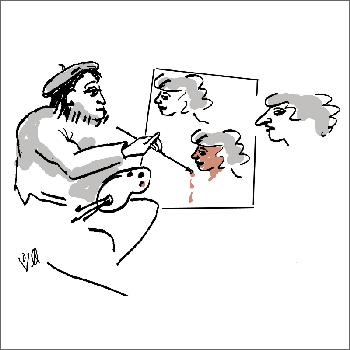Manipulating the Entire Image
Manipulations that are specific to one area of an image and are not performed on other areas are questionable.

- This guideline refers to adjustments that ordinarily might be applied to an entire image. An example would be the photographic technique of dodging and burning. (Dodging and burning - a darkroom technique where a small portion of a photographic print is exposed to less or more light (respectively), than the rest of the print.)
- This guideline is not referring to techniques such as cloning and copying. These are discussed in guideline #8.
- Purists believe that selective enhancement of specific areas of an image should never be allowed. For the most part they are correct; however, there are a few rare and legitimate exceptions to the rule.
- Currently available print and display technologies cannot deal with a range of colors beyond that of 8bits per color. 8bits is 256 shades (or greyscales). 8bits each of red, green, and blue is called 24bit, or 16.7 million possible colors. In reality, it is difficult to correctly display and impossible to print, all of the potential colors in an image using current technologies.
- Some scientific instruments and cameras are able to acquire images at higher bit depths (e.g., 10, 12, 16 bits). As an example, 16bit is 65,536 shades (or greyscales). 16bits each of red, green, and blue would be 48bit, or 281 trillion possible colors. This is a tremendous amount of information to attempt to communicate in an image.
- Possible exception – suppose that a scientist obtains 16bit greyscale images that contain two groups of important features. One set of features is very bright and the other is dim. Simply converting these images to 8bit greyscale might not allow the viewer to appreciate both sets of features due to the wide dynamic range of the images. A scientist could carefully and selectively enhance the dimmer set of features before the conversion to 8bit to ensure that the viewer can see the features. All the images submitted for a journal article would need to be enhanced in a uniform manner (guideline #5) and the figure legend or methods section would need to be explicit about what was done.
- Almost all other forms of selective enhancement would most likely be considered inappropriate. This includes selective enhancement of specific bands or lanes within an image of a gel.
- If selective enhancement was performed and properly declared in submitted manuscript, then it would be up to the editors and reviewers to decide if it is appropriate on a case-by-case basis.
- Users need to be aware that software filters can selectively enhance specific areas of an image. Guideline #7 discusses some of the issues related to software filters
|

